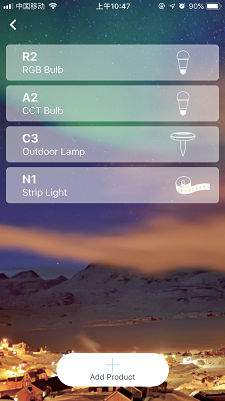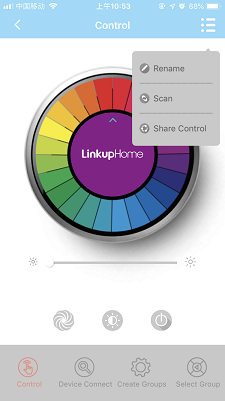At present, the LED inspection standards are set by the countries themselves. If they are to be distinguished, they can still be divided into five categories: international standards, regional standards, national standards, groups and industry standards. These standards are not actually for all LED components. One unified specification, some are only specified for different requirements such as light source characteristics, process, etc.
LED standards organizations and types around the world are based on international standards. The three major organizations, such as the International Electrotechnical Commission (IEC), the International Commission on Illumination (CIE), and the International Standards Organization (ISO), are members. It is composed of countries all over the world, and many countries jointly set and comply with relevant regulatory requirements.
The International Electrotechnical Commission (IEC) recognizes LEDs as electrical components that emit light, so it pays more attention to safety specifications for operation and application. The specifications for LEDs do not deviate from the range of LED electrical characteristics. There are currently 4 articles on LED components. The standards are IEC60838-2-2, IEC61374-2-13, ICE62031, ICE62384.
The International Commission on Illumination (CIE) has more specifications for the light source characteristics of LEDs, but some of the contents also provide clear provisions for safety. Unfortunately, for the high-power LED light source for lighting, the progress may not be discussed. Immediately keep up with the market pulsation, the relevant content is still paid for, and most of the CIE specifications or documents are in the form of technical reports. There are 3 documents produced by CIE, CIE177, CIE127, CIES009, and there are 4 branches in the CIE, a total of 9 committees, to implement the LED related specifications.
The International Standards Organization (ISO), as an international standard-setting organization, spares no effort in promoting various standards. In key projects such as LED-related materials, processes, systems, products, etc., almost every link will be involved and formulated. In recent years, it has also cooperated with the above two major international organizations to publish common standards.
As for regional standards, it refers to units established by the European Union alone, such as the European Committee for Standardization (CEN). The standards set by it also cover the conditions encountered by most LED products, from materials, systems to products... The content is included.
Group and industry standards, the industry will be the following three major organizational norms, including the North American Lighting Association (IESNA), Solid State Lighting Technology Alliance (ASSIST), Excellent Security Certification (UL)...etc.
The North American Lighting Association (IESNA), the US Department of Energy (DOE) convened CIE, IEC, UL... and other official and non-governmental standards bodies, in line with the ENERGY STAR standards, to develop LED performance standards and measurement methods related to the regulations, in 2007 The ENERGY STAR solid-state lighting specification has been released and is divided into two phases according to the specification. The first stage indoor lighting must reach 35 lm/W; the second stage must reach 70 lm/W level in 2010.
The Solid State Lighting Technology Alliance (ASSIST), which is composed of the American Enterprise Alliance, is the main content of the proposed specifications.
Youli Safety Certification (UL) is an international-level private certification company. It also conducts research on the safety of LED products. In addition to the above-mentioned institutions and alliances, some LED manufacturing and R&D areas, such as Japan and Korea. The mainland, or Taiwan, also have different standards.
The development of LED standards in Asian countries is involved in the development of Japanese LED standards, including Japan Electron Ball (J EL), Japan Lighting Commission (JCIE), Japan Lighting Association (JIES), Japan Lighting Industry Association (JIL), etc. 4 Organizations, these organizations established the Japan LED Lighting Promotion Conference (J LEDS) in June 2004.

Smart RGBW bulbs add RGB colorful light based on the traditional warm light, they are suitable for home, bars and offices. No need to install the cable lines again, once the bulb is installed on the lamp holder, just turn on the switch, the traditional lighting can be immediately upgraded to smart RGBW lighting, you can enjoy the convenience and interest brought by smart lighting.
Users can choose the light mode according to time, scene, mood, and also can adjust the brightness, color temperature and color of the light. With the grouping function on the App, each group can control up to 48 products, users can set 7-8 groups on one App, total around 350 products can be controlled via one App. You can set the light turn on / off time by the timing function. Using energy-saving and high-quality LED lamp beads, the light source is stable without stroboscopic, the effective life can be more than 20000 hours. Our LED products can meet global quality standards and pass European testing by TUV Rheinland. Bulbs have certifications such as EMC, RED, LVD, ROHS, REACH, ERP and FCC.
The App are developed on the most advanced Bluetooth Mesh technology. [LinkupHome" App can be downloaded in the App store or Google Player, then you can control our product without any complicate steps. The App is stable, easy control and multifunctional.
The advantages of Bluetooth Mesh are fast connect, low power consumption, no password required and Ad-Hoc Network. No need WIFI and hubs, as long as you have a Bluetooth-enabled smart phone, you can experience the smart light. When you install several smart bulbs, the self-organizing network function can make the signals free connect, break the limitation of distance.


Product Parameters
Description: Bluetooth Mesh RGB Bulb with APP
Bluetooth: CSR Bluetooth Mesh
Control Qty: 1-48 pcs
Control distance: 20m
Product dimension: Dia66mm * H122mm
Material: PC & Aluminum & Nylon
Working Voltage: 100-240V
Frequency: 50/60Hz
Color Temperature: RGB+Warm White (3000K)
LED Power: 9.5W (710lm)
Base Type: E27/E26/B22 available
Warranty: 2 Years
Certification: CE(EMC,RED), ROHS,FCC
Color box size: 15.3*7.4*7.4cm
G.W. of Unit: 0.22kg
N.W. of Unit: 0.18kg
Phone Controlled Light Switch,Phone Control Bulb,Smart Wireless Light,Group Control Bulb
Ningbo Homey Photoelectric Tech. Co., Ltd , http://www.linkuphome.com